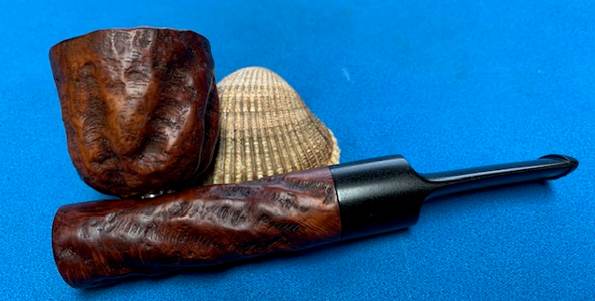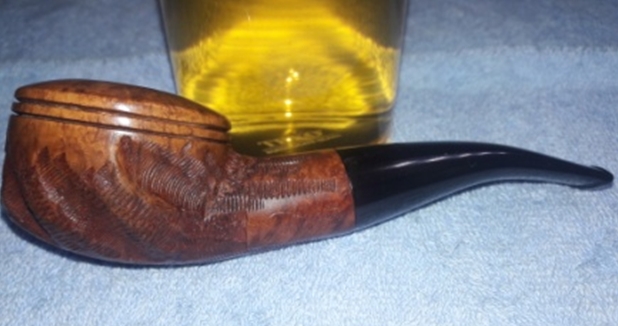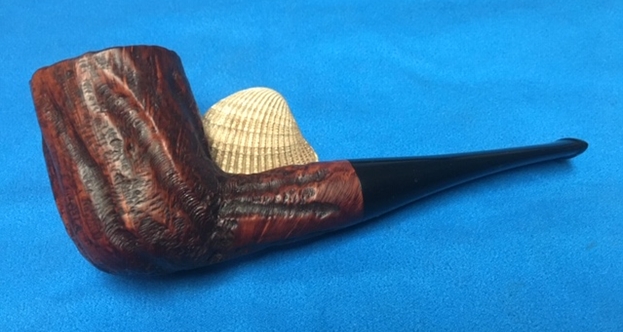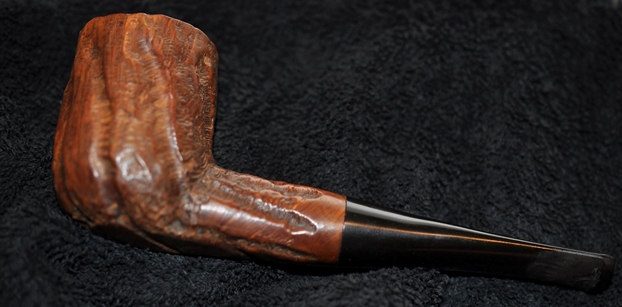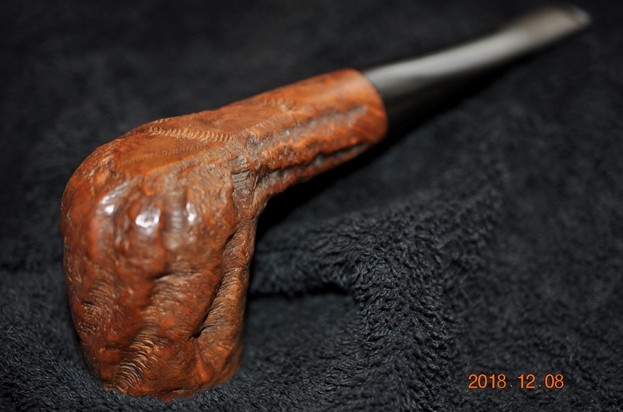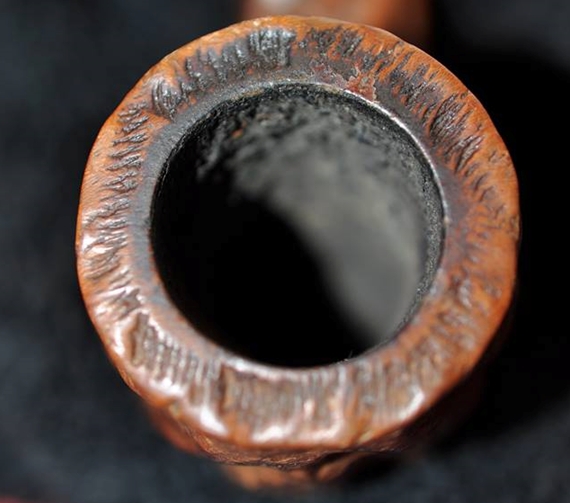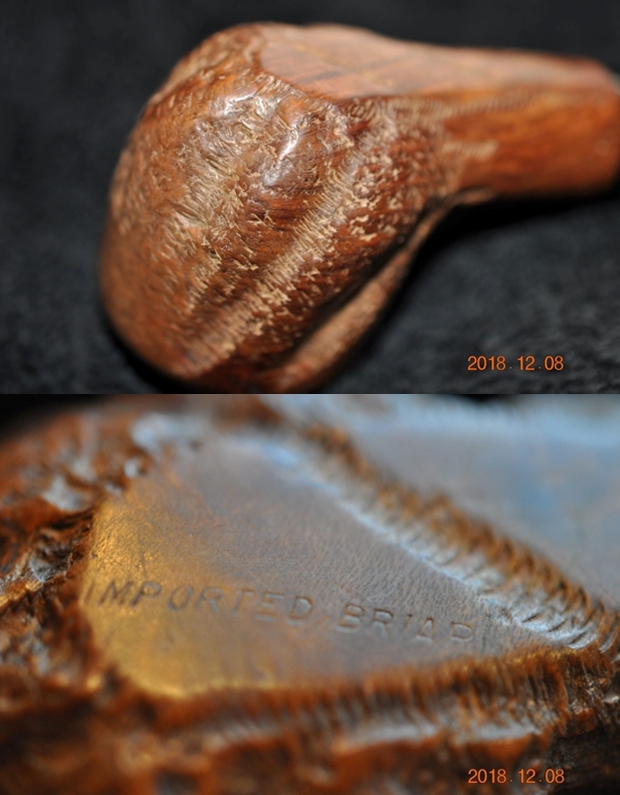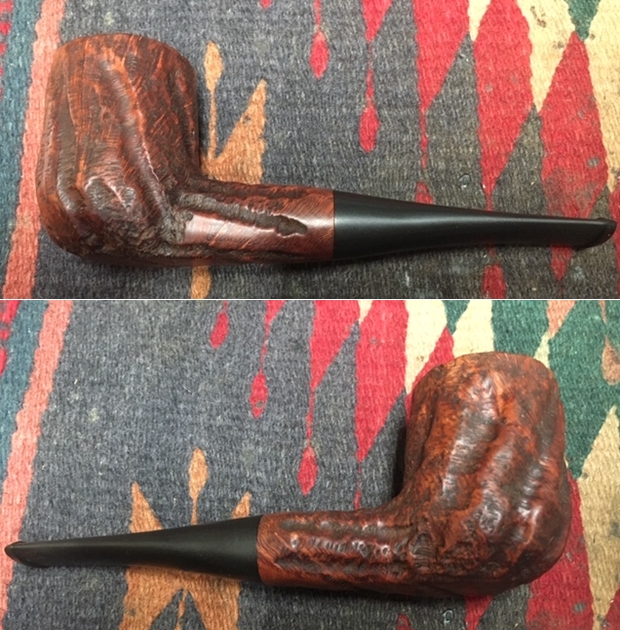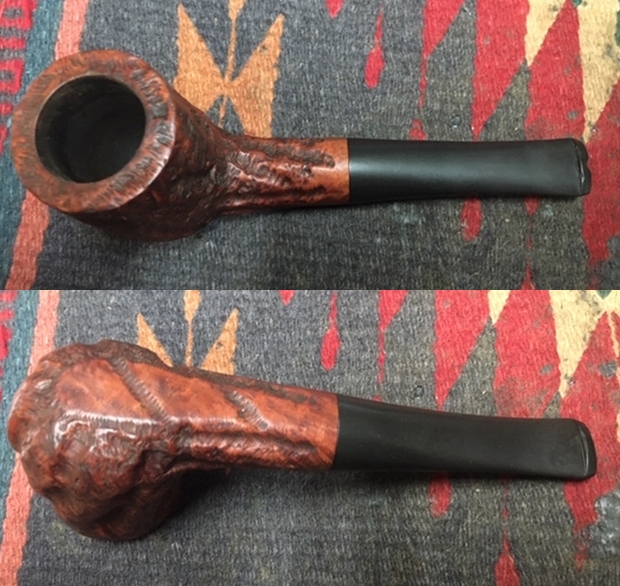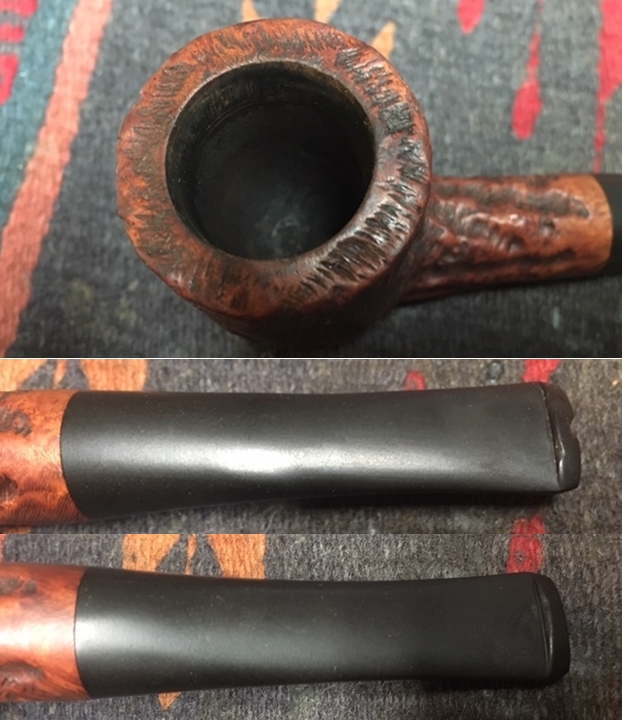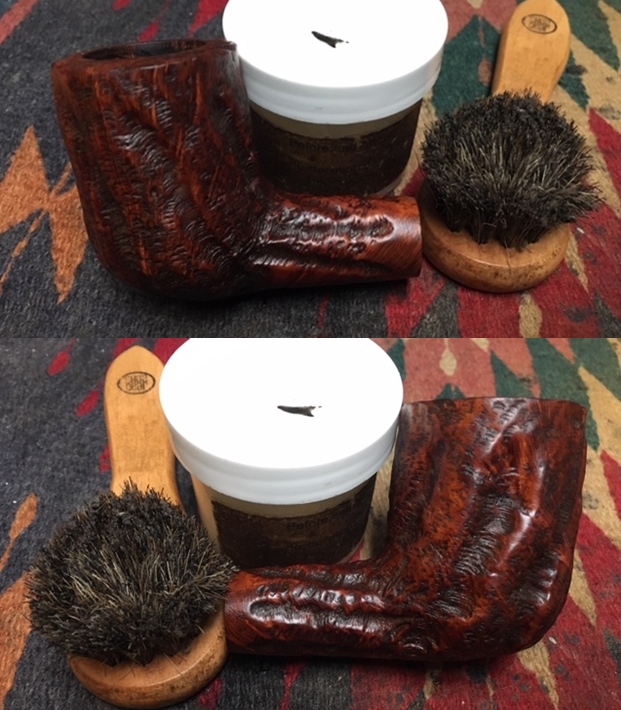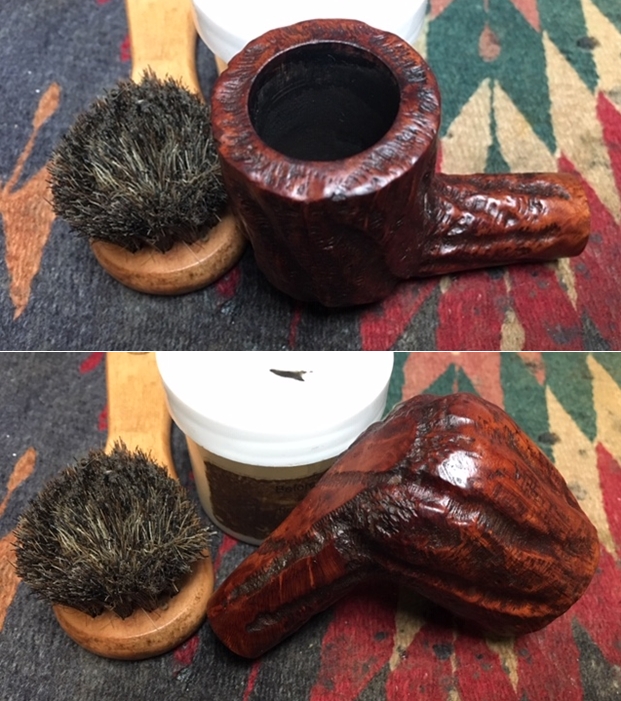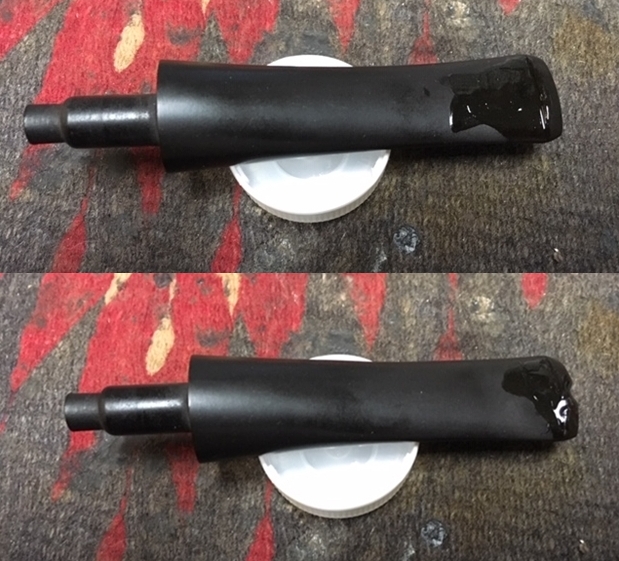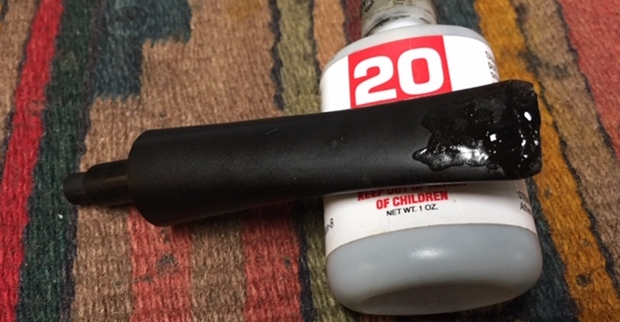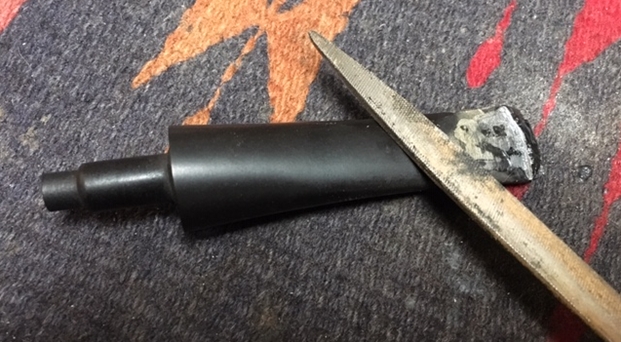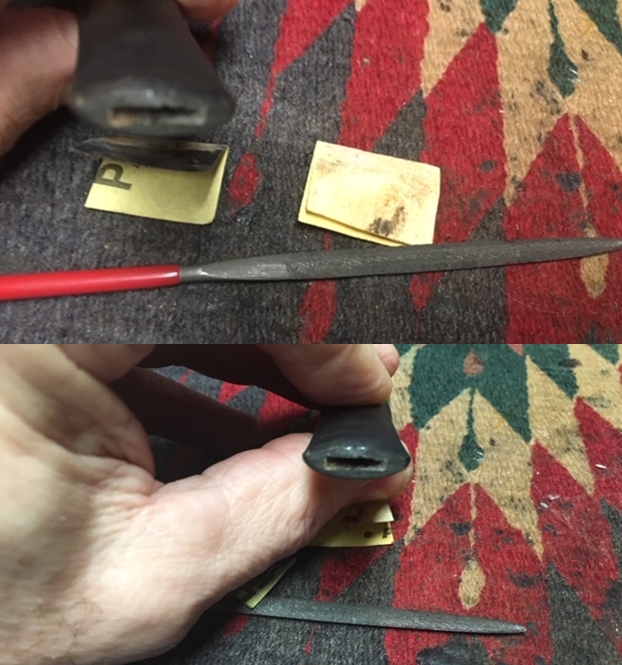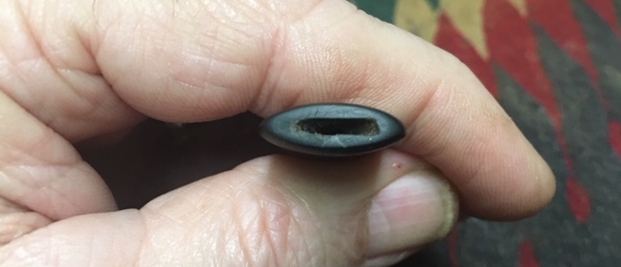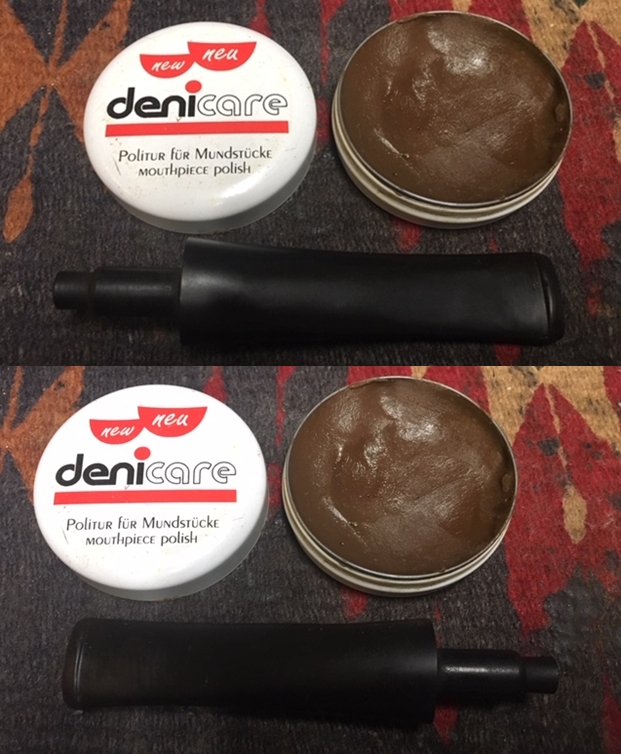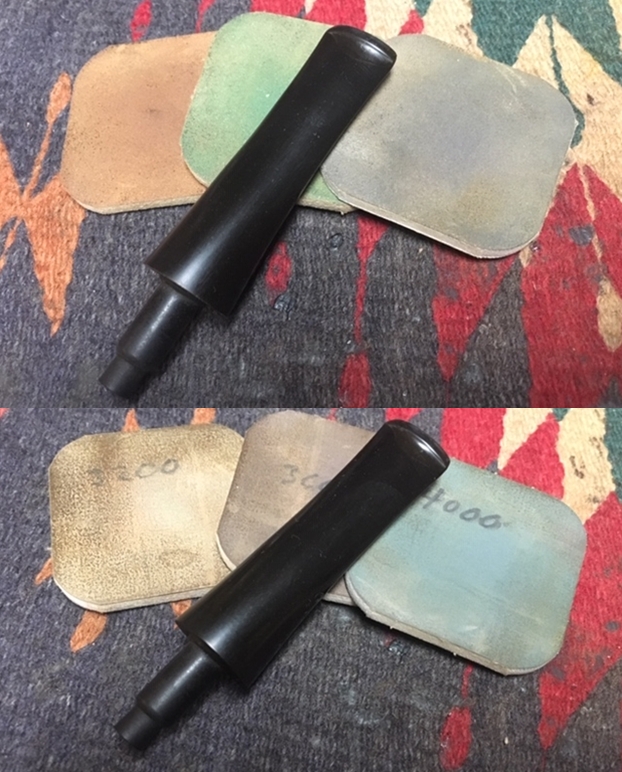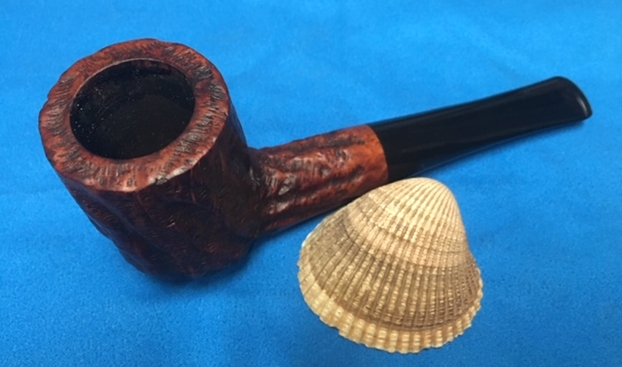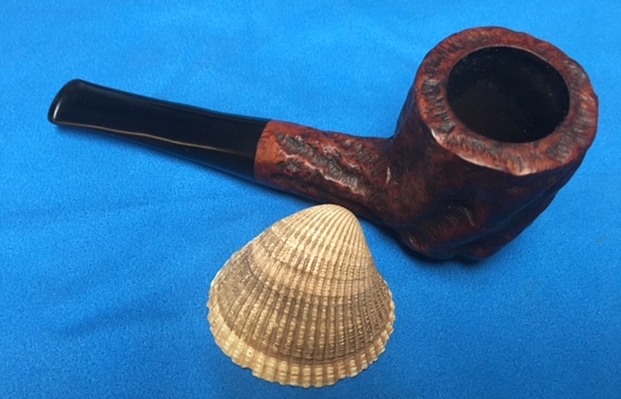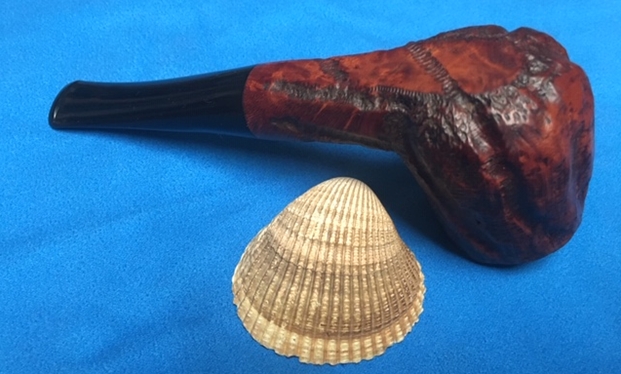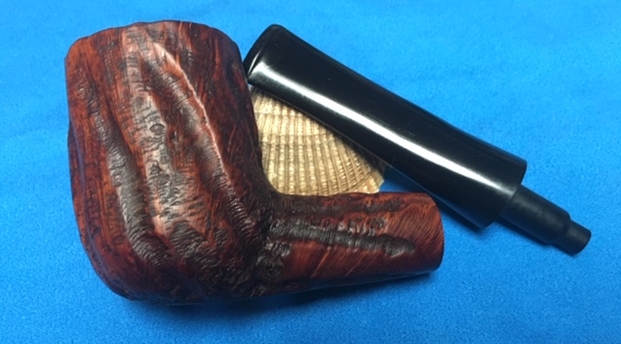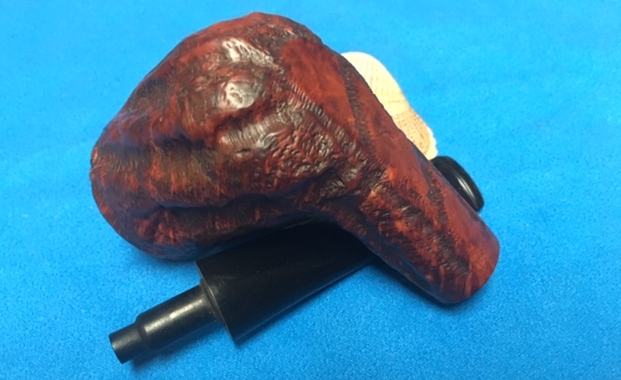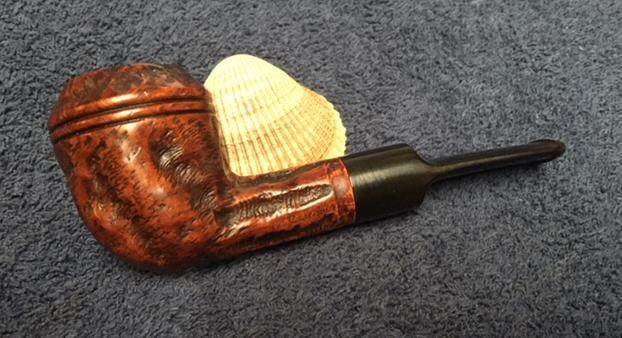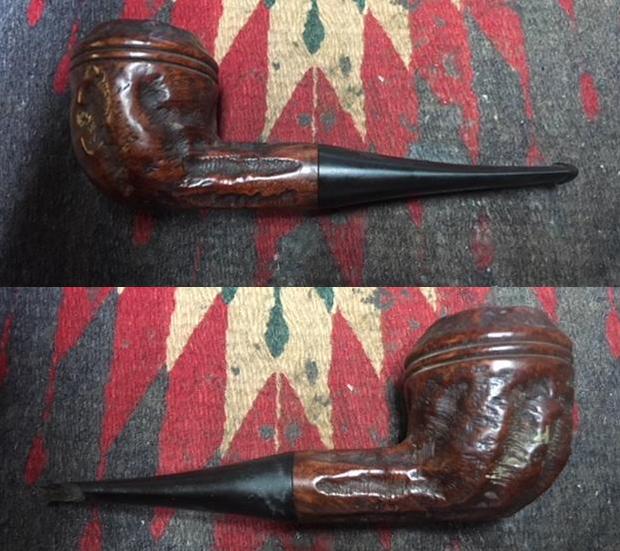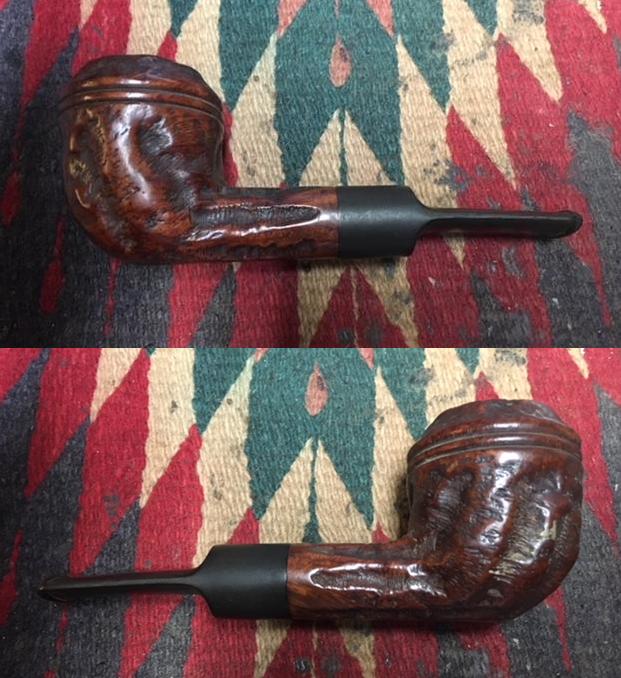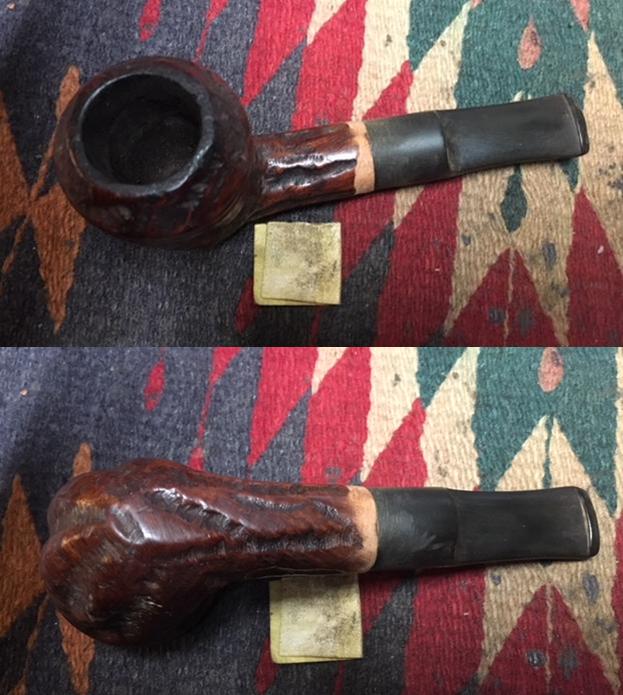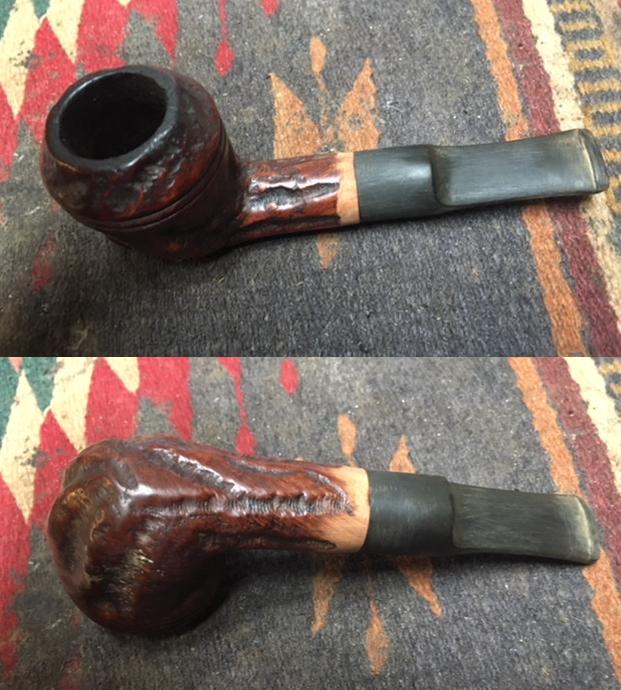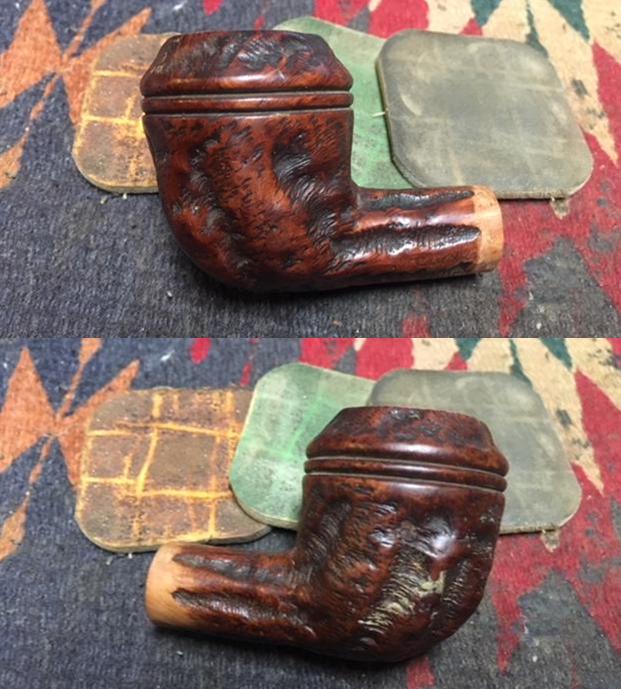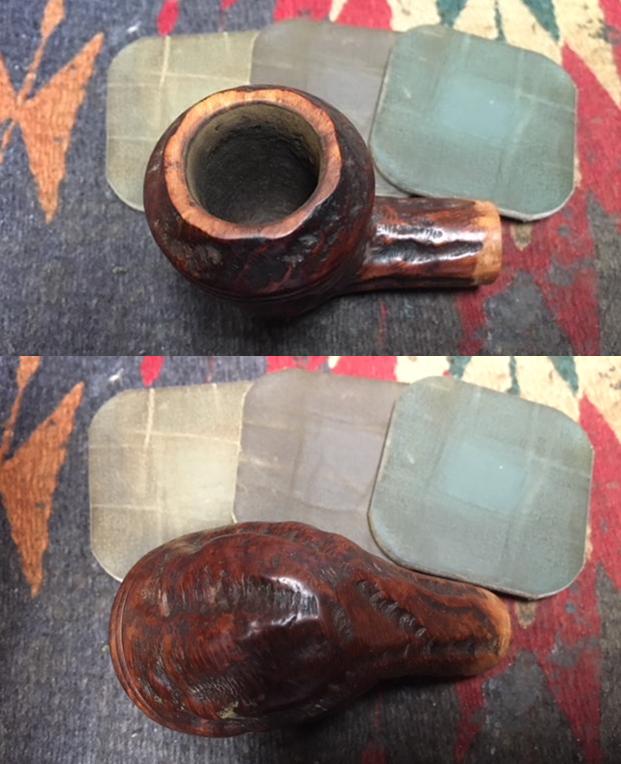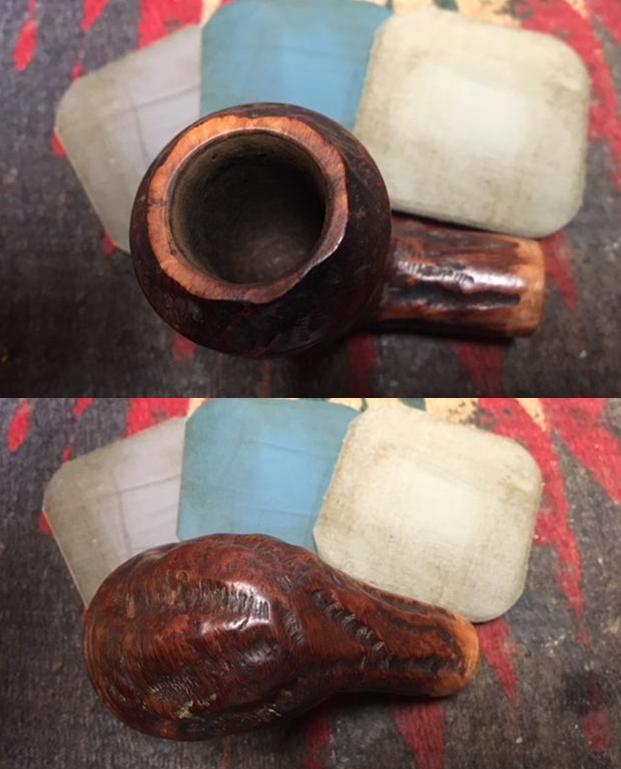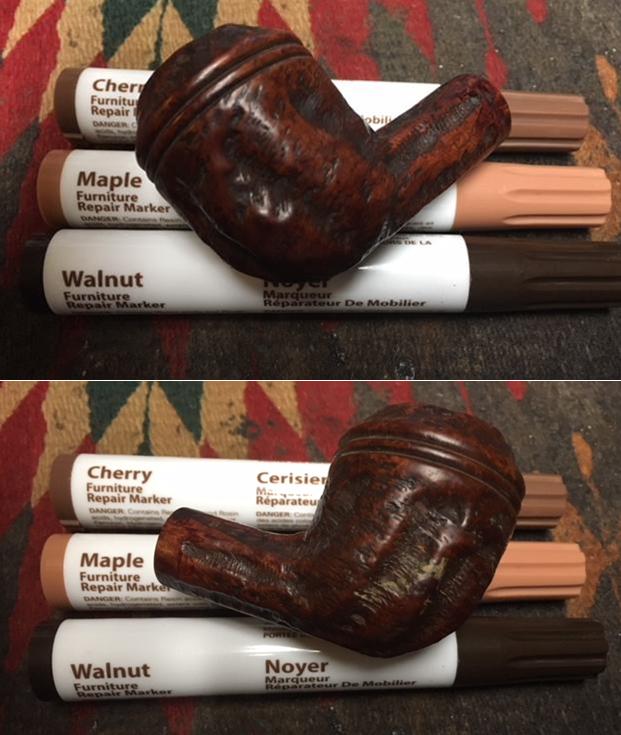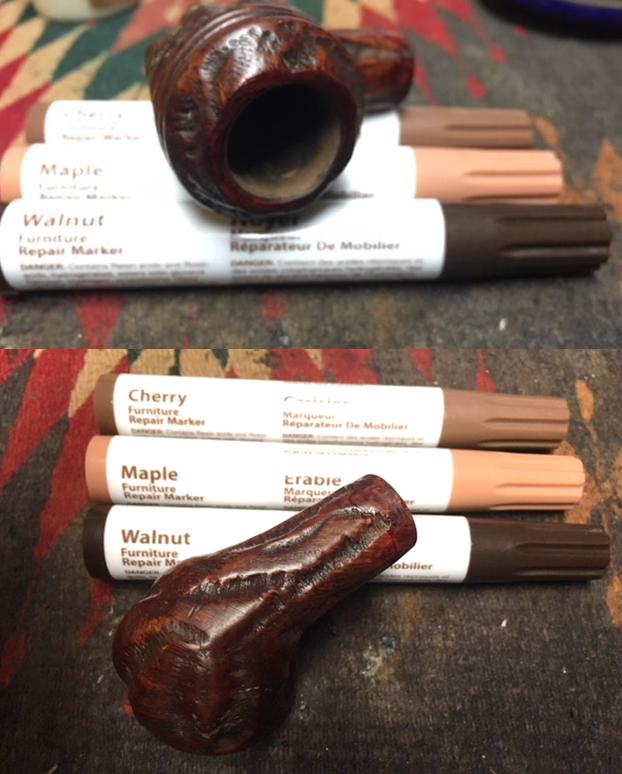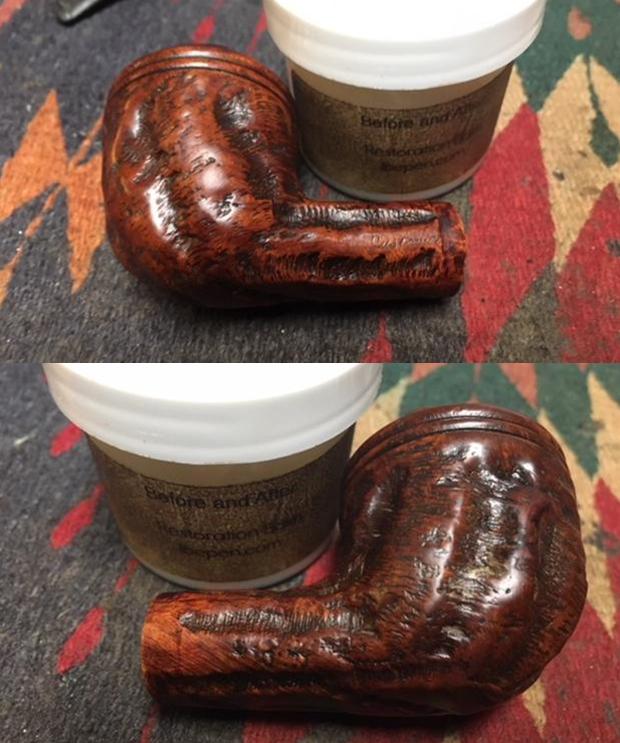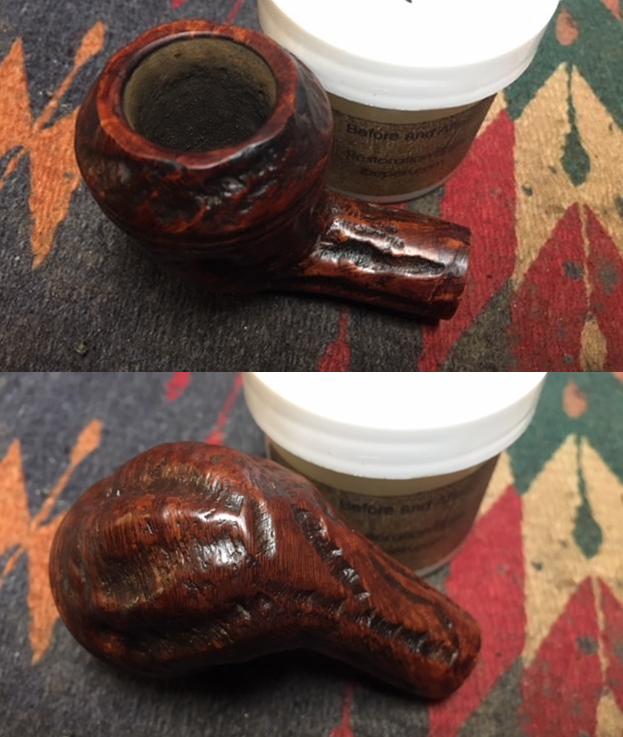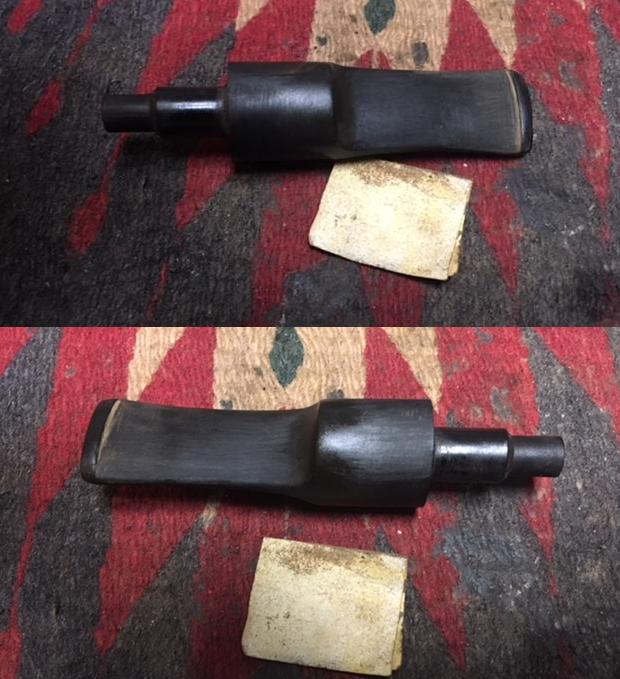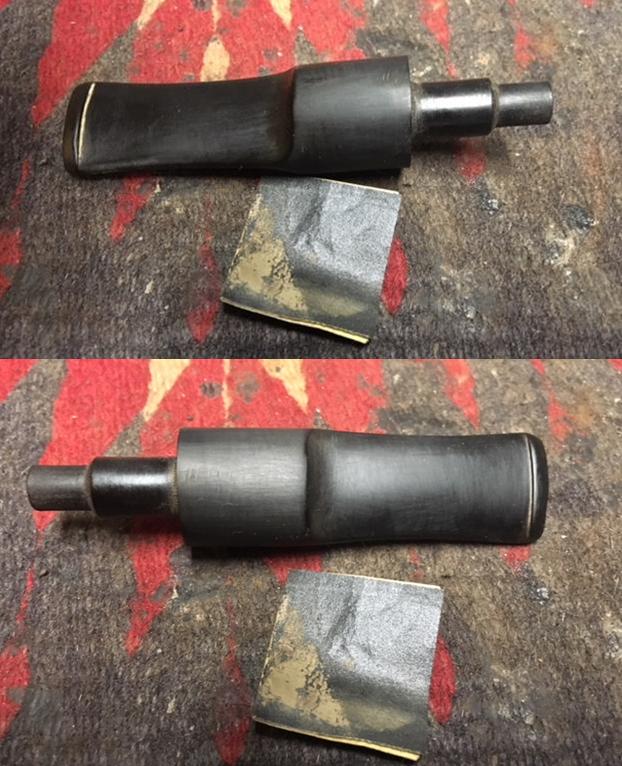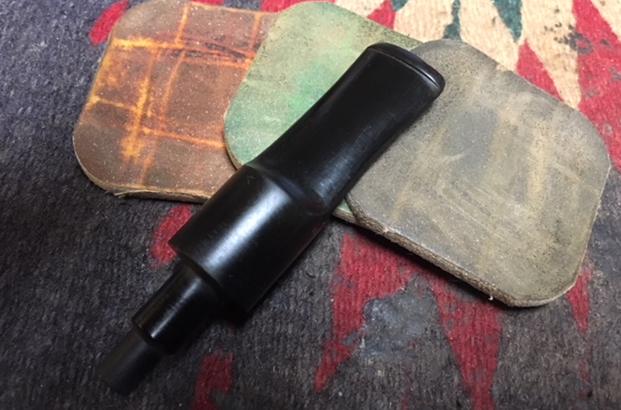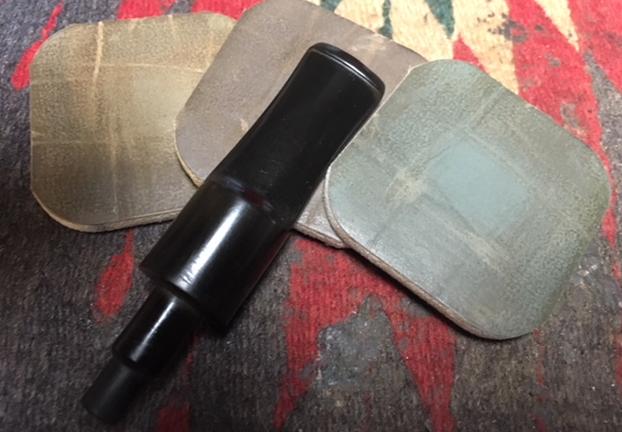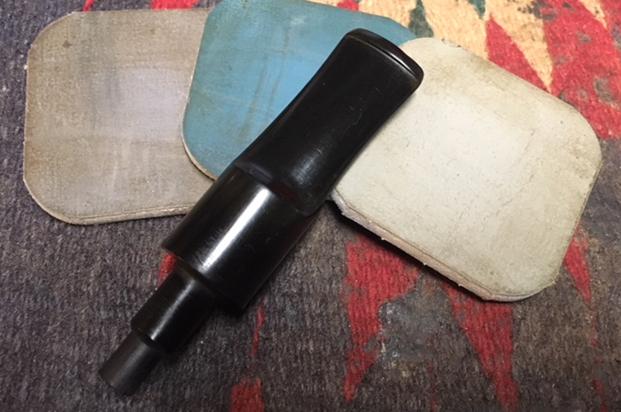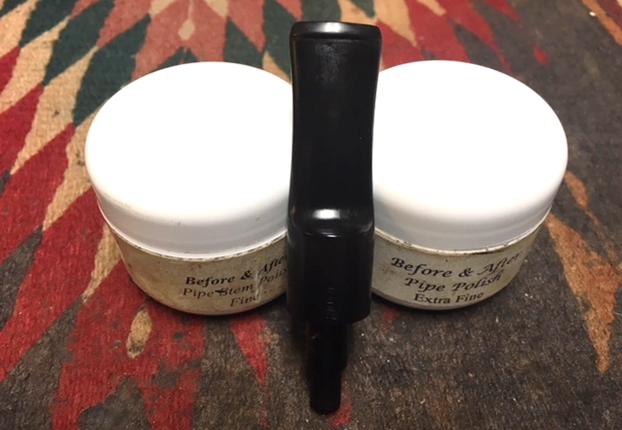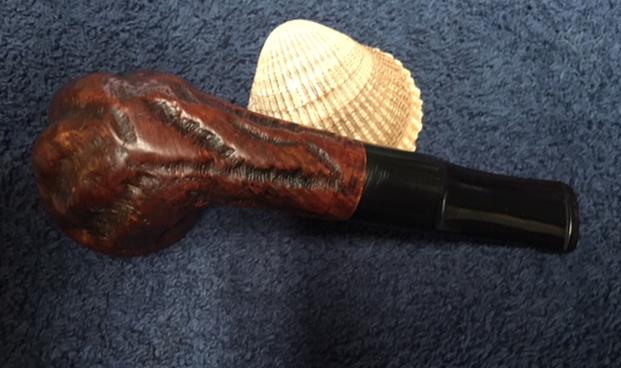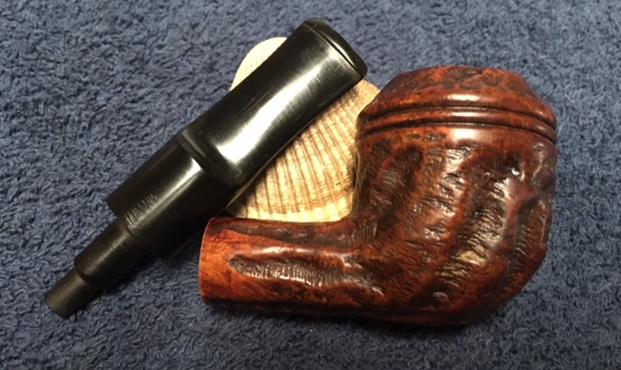Blog by Steve Laug
 I thought it might be helpful to take you through my process of working on each pipe that we purchase. Jeff has set up a spread sheet to track where the pipe came from, the date of purchase and what we paid for it so that we know what we have invested in the pipe before we even work on it. This takes a lot of the guess work out of the process. This particular pipe was purchased on 05/01/2022 from an Antique Shop in Bozeman, Montana, USA. I also want you to understand why we take the photos we do. If you have followed for a while then you will see the familiar pattern of the photos we include both in the before and midstream process of working on a pipe. It is not accidental as the photos have been taken to help me make an assessment of the pipe Jeff sees before he starts his clean up work. We do this to record the condition that the pipe was in when received it and to assess what kind of work will need to be done on. When I look at these photos this is what I see.
I thought it might be helpful to take you through my process of working on each pipe that we purchase. Jeff has set up a spread sheet to track where the pipe came from, the date of purchase and what we paid for it so that we know what we have invested in the pipe before we even work on it. This takes a lot of the guess work out of the process. This particular pipe was purchased on 05/01/2022 from an Antique Shop in Bozeman, Montana, USA. I also want you to understand why we take the photos we do. If you have followed for a while then you will see the familiar pattern of the photos we include both in the before and midstream process of working on a pipe. It is not accidental as the photos have been taken to help me make an assessment of the pipe Jeff sees before he starts his clean up work. We do this to record the condition that the pipe was in when received it and to assess what kind of work will need to be done on. When I look at these photos this is what I see.
- The first thing I see is a classic Custombilt Rusticated Billiard with a twist and what appears to be an inserted bowl. It has a vulcanite saddle stem. It is well proportioned and well made with a great classic Custombilt appearance.
- The finish is dirty and there is grime and grit ground into the rugged rustication on the sides of the bowl and shank. It is dusty and dull looking but under the grime the pipe looks good.
- The rim top has some light lava and debris in the valleys of the rustication on the top and the edges. There is some darkening around the inner edge and top of the bowl. but cleaning will reveal a real beauty.
- The bowl has a thick cake and debris on the walls that hides the walls and some grime on the inner edge of the bowl but once it is clean we will know what the bowl and edges really look like. The outer edges look good and there does not appear to be any obvious burn damage to the top or bowl edges.
- The vulcanite saddle stem is in good condition – dirty, lightly oxidized and has tooth chatter and marks on both sides ahead of button. There is no logo on the stem sides.
Overall my impressions of this pipe is that it is a unique pipe even for Custombilt that once cleaned up will look pretty amazing. I like the tactile rustication style on Custombilts and have found nothing that comes close to it. The photos below confirm the assessment above.
 Jeff took close up photos so that I could have a clearer picture of the condition of the bowl, rim edges and top. The rim top photos confirm my assessment above. The cake in the bowl is thick with tobacco debris stuck on the walls. The rim top has light lava, grime and darkening around the top and edges in the rusticated surface. You can also see the condition of the outer edge and the inner edge is in great condition. This is what I look for when assessing a pipe. There is no visible burn damage at this point. The bowl is still round and other than being in a used condition it is in great shape.
Jeff took close up photos so that I could have a clearer picture of the condition of the bowl, rim edges and top. The rim top photos confirm my assessment above. The cake in the bowl is thick with tobacco debris stuck on the walls. The rim top has light lava, grime and darkening around the top and edges in the rusticated surface. You can also see the condition of the outer edge and the inner edge is in great condition. This is what I look for when assessing a pipe. There is no visible burn damage at this point. The bowl is still round and other than being in a used condition it is in great shape.  The photos of the vulcanite stem surface from various angles confirmed my assessment of its condition. You can see that it is dirty in the first photo below. The stem has some tooth marks and chatter on the top and underside near the button.
The photos of the vulcanite stem surface from various angles confirmed my assessment of its condition. You can see that it is dirty in the first photo below. The stem has some tooth marks and chatter on the top and underside near the button. 
 Instead of telling you what I see in the next photos of the sides of the bowl and the heel I want to hear from you. Tell me what you see? What does the finish look like to you? Are there any visible problems or issues that stand out to you? Are the cracks or scratches in the valleys of the rustication or the high spots? Are there visible flaws or fissures in the briar? How random does the deep rustication look? Is there a pattern to it? Any visible issues on the heel of the bowl? These questions should help you to see what I am looking for when I see these photos.
Instead of telling you what I see in the next photos of the sides of the bowl and the heel I want to hear from you. Tell me what you see? What does the finish look like to you? Are there any visible problems or issues that stand out to you? Are the cracks or scratches in the valleys of the rustication or the high spots? Are there visible flaws or fissures in the briar? How random does the deep rustication look? Is there a pattern to it? Any visible issues on the heel of the bowl? These questions should help you to see what I am looking for when I see these photos. 
 Jeff removed the bowl from the shank. It was threaded and screwed onto a threaded nipple set in the shank. You can see the deep grime in the finish under the bowl.
Jeff removed the bowl from the shank. It was threaded and screwed onto a threaded nipple set in the shank. You can see the deep grime in the finish under the bowl. He took photos of the stamping on a smooth panel on the right side of the shank. It reads Custombilt [over] Convertibole. What stands out for you in the photos of the stamping on the pipe? What do you look for in the stamping? I know it is dirty but what do you see underneath the grime on the surface of the briar and the acrylic?
He took photos of the stamping on a smooth panel on the right side of the shank. It reads Custombilt [over] Convertibole. What stands out for you in the photos of the stamping on the pipe? What do you look for in the stamping? I know it is dirty but what do you see underneath the grime on the surface of the briar and the acrylic?  When I am working on pipes I like to get a sense of the history of the brand of the pipe and try to get a feel for the pipe maker. In this case I turned first to Pipephil’s site to see what I could learn about Custombilt (http://pipephil.eu/logos/en/logo-c8.html). I did a screen capture of the section on the screen. I have also included the information from the side bar below the photo.
When I am working on pipes I like to get a sense of the history of the brand of the pipe and try to get a feel for the pipe maker. In this case I turned first to Pipephil’s site to see what I could learn about Custombilt (http://pipephil.eu/logos/en/logo-c8.html). I did a screen capture of the section on the screen. I have also included the information from the side bar below the photo.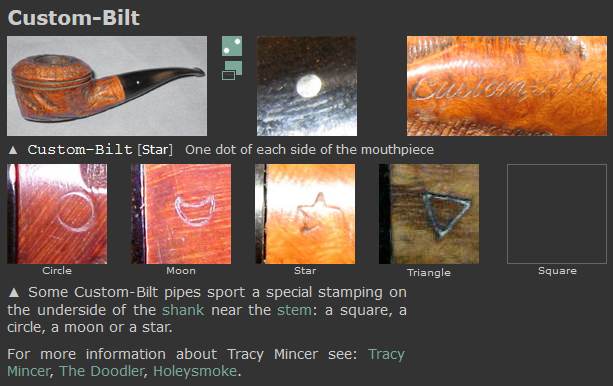 Chunky bowls with rough carving or gouges.
Chunky bowls with rough carving or gouges.
Tracy Mincer stopped making Custom-Bilt pipes in the early 1950s. The trademark was successively bought by Leonard Rodgers (1953), Consolidated Cigars (1968) and Wally Frank Co. (early 1970s). The later began to produce again his version of the pipe in 1974 or 1975 at Weber pipe factory (NJ). In 1987, the pipes were made out of the Butz-Choquin factory (France) and then Mexico until the late 1990s. Currently (2010), the Custombilt name is owned by Tobacalera of Spain which is part of Altadis.
It is generally admitted (but not proved) pipes stamped “Custom-Bilt” (with the hyphen) are from the Mincer era. The name might have changed from Custom-Bilt to Custombilt (without the hyphen) in 1946.
The pipe in hand that I am working seems to come after the change of stamping that happened in 1946.
I turned then to Pipedia (https://pipedia.org/wiki/Custom-Bilt). I found a brief history of the brand and read some interesting facts that I have included below. I am also include a screen capture and description of the stamp that is on the right side of the shank. I read further and found a description of the Convertibole pipe along with an advertisement for the pipe. I have included both below.
I read further and found a description of the Convertibole pipe along with an advertisement for the pipe. I have included both below.
American companies such as Marxman were doing similar things. One Marxman carved head actually was valued at $7,500! It seems to me that Mincer was trying to show that the Custom-Bilt company was a complete outfit capable of making the same things as some of the “big boys” of the day.
There were other variations, such as the Convertible (removable bowl), the Saddle, Military Bit stems, and others.  I really like the description “the newest idea in pipe smoking. Interchangeable for every occasion, as individual as a thumbprint, hand-crafted styles for office, home and outdoors.” You can also see the various bowls that were available and can be changed with “the twist of your wrist – plugs in a fresh pipe 2 or 3 times daily.
I really like the description “the newest idea in pipe smoking. Interchangeable for every occasion, as individual as a thumbprint, hand-crafted styles for office, home and outdoors.” You can also see the various bowls that were available and can be changed with “the twist of your wrist – plugs in a fresh pipe 2 or 3 times daily.
I am once again including the link to Jeff’s clean up process blog. Please remember that the point of these blogs is not to wow you with the work or make you shake your heads but I want you to know the details of the work we do so you can do your own. Back in 2020 Jeff wrote a blog about his cleaning process. I am including a link to that now so you can see what I mean about his process. Do not skip it! Give it a read (https://rebornpipes.com/2020/01/20/got-a-filthy-estate-pipe-that-you-need-to-clean/). Here is the introduction to that blog and it is very true even to this day.
Several have asked about Jeff’s cleaning regimen as I generally summarize it in the blogs that I post rather than give a detailed procedure. I have had the question asked enough that I asked Jeff to put together this blog so that you can get a clear picture of the process he uses. Like everything else in our hobby, people have different methods they swear by. Some may question the method and that is fine. But it works very well for us and has for many years. Some of his steps may surprise you but I know that when I get the pipes from him for my part of the restoration they are impeccably clean and sanitized. I have come to appreciate the thoroughness of the process he has developed because I really like working on clean pipe!
For the benefit of some of you who may be unfamiliar with some of the products he uses I have included photos of three of the items that Jeff mentions in his list. This will make it easier for recognition. These three are definitely North American Products so you will need to find suitable replacements or order these directly on Amazon. The makeup pads are fairly universal as we were able to pick some up in India when we were with Paresh and his family.
In the blog itself he breaks his process down into two parts – cleaning the stem and cleaning the bowl. Each one has a large number of steps that he methodically does every time. I know because I have watched him do the work and I have seen the pipes after his work on them. He followed this process step by step and when the pipe got to me it was spotlessly clean and ready for my work. The inside of the stem, shank and bowl were clean and to me that is an amazing gift as it means that my work on this end is with a clean pipe! I cannot tell you how much difference that makes for my work.
- I have never seen a is a classic Custombilt Rusticated Billiard with a twist like this Convertibole. It has a vulcanite saddle stem. It is well proportioned and well made with a great classic Custombilt appearance.
- The finish is clean and the grime and grit have been removed from the finish on the bowl. The rugged, tactile rustication pattern looks very good as well. There is a unique style removable bowl.
- The darkening, lava, grime and dust on the rusticated rim top has been removed and it has revealed that the inner edge is clean and burn free. The outer edge of the bowl is also in good condition.
- With the cake reamed out the walls of the bowl are clean and they look very good with no checking or burn damage to the walls.
- The vulcanite saddle stem looks very good and cleaned up well. The light tooth marks an chatter will be easily polished out. There is no logo on the sides of the stem.
Hopefully the steps above show you both what I look for when I go over the pipe when I bring it to the work table and also what I see when I look at the pipe in my hands. They also clearly spell out a restoration plan in short form. My work is clear and addressing it will be the next steps. I took photos of the whole pipe to give you a picture of what I see when I have it on the table. This is important to me in that it also shows that there was no damage done during the clean up work or the transit of the pipe from Idaho to here in Vancouver. 
 I carefully went over the bowl and rim top to get a sense of what is happening there. In this case once the rim top and edges were cleaned the rim top and inner edge showed no damage. The darkening on the rim top and edges was also gone. I go over the stem carefully. The fit to the shank is snug and the transitions are smooth. There were some light tooth marks and chatter on the surface of the stem and the button. I took photos of the rim top and stem sides to show as best as I can what I see when I look at them.
I carefully went over the bowl and rim top to get a sense of what is happening there. In this case once the rim top and edges were cleaned the rim top and inner edge showed no damage. The darkening on the rim top and edges was also gone. I go over the stem carefully. The fit to the shank is snug and the transitions are smooth. There were some light tooth marks and chatter on the surface of the stem and the button. I took photos of the rim top and stem sides to show as best as I can what I see when I look at them.  I always check to make sure that the clean up work did not damage the stamping on the shank sides in any way. It is in excellent condition and is very clear and readable.
I always check to make sure that the clean up work did not damage the stamping on the shank sides in any way. It is in excellent condition and is very clear and readable. I love just looking at the lay of the pipe and the proportion of the hand made pipes. I took the pipe apart to get a sense of what was in the mind of the pipe maker when he crafted the pipe. The photo shows its beauty in flow and shape.
I love just looking at the lay of the pipe and the proportion of the hand made pipes. I took the pipe apart to get a sense of what was in the mind of the pipe maker when he crafted the pipe. The photo shows its beauty in flow and shape.
 I rubbed down the bowl and shank with Before & After Restoration Balm. It is a paste/balm that is rubbed into the surface of the briar. The product works to deep clean the nooks and crannies of finish, enliven and protect the briar. I worked it into the briar with my finger tips and a horse hair shoe brush. I let it sit for 10 minutes then wiped it off with a soft cloth then buffed it with a cotton cloth. The briar really began to have a deep shine in the briar and the rustication showed depth. The photos I took of the bowl at this point mark the progress in the restoration. It is a gorgeous pipe.
I rubbed down the bowl and shank with Before & After Restoration Balm. It is a paste/balm that is rubbed into the surface of the briar. The product works to deep clean the nooks and crannies of finish, enliven and protect the briar. I worked it into the briar with my finger tips and a horse hair shoe brush. I let it sit for 10 minutes then wiped it off with a soft cloth then buffed it with a cotton cloth. The briar really began to have a deep shine in the briar and the rustication showed depth. The photos I took of the bowl at this point mark the progress in the restoration. It is a gorgeous pipe. 

 I set the bowl aside and turned my attention to the stem. I polished the stem with micromesh sanding pads – 1500-12000 grit sanding pads and water to wet sand the stem. I wiped it down after each sanding pad with Obsidian Oil on a cotton rag after each sanding pads. I know that many say Obsidian Oil does nothing for acrylic stems, but I find it does two things – first it gives some protection to the stem from buildup and second it give the sanding pads bite in the polishing process.
I set the bowl aside and turned my attention to the stem. I polished the stem with micromesh sanding pads – 1500-12000 grit sanding pads and water to wet sand the stem. I wiped it down after each sanding pad with Obsidian Oil on a cotton rag after each sanding pads. I know that many say Obsidian Oil does nothing for acrylic stems, but I find it does two things – first it gives some protection to the stem from buildup and second it give the sanding pads bite in the polishing process. 
 After finishing with the micromesh pads I rub the stem down with Before & After Fine and Extra Fine stem polish as it seems to really remove the fine scratches in the vulcanite. I rub the Fine Polish on the stem and wipe it off with a paper towel and then repeat the process with the Extra Fine polish. I finish the polishing of the stem down with a final coat of Obsidian Oil and set the stem aside to let the oil absorb. This process gives the stem a shine and also a bit of protection.
After finishing with the micromesh pads I rub the stem down with Before & After Fine and Extra Fine stem polish as it seems to really remove the fine scratches in the vulcanite. I rub the Fine Polish on the stem and wipe it off with a paper towel and then repeat the process with the Extra Fine polish. I finish the polishing of the stem down with a final coat of Obsidian Oil and set the stem aside to let the oil absorb. This process gives the stem a shine and also a bit of protection. The final steps in my process involve using the buffer. I buffed the stem with Blue Diamond to polish out the light scratches in the acrylic. I gave the bowl multiple coats of Conservator’s Wax and the stem multiple coats of carnauba wax. I have found that I can get a deeper shine if I follow up the wax buff with a buff with a clean buffing pad. It works to raise the shine and then I hand buff with a microfiber cloth to deepen the shine. It is always fun for me to see what the polished bowl looks like with the polished stem. It really is a nice pipe. The rusticated finish around the bowl sides and shank looks great with the rich brown stains. The Custombilt Convertibole Interchangeable Bowl Billiard feels great in my hand. It is a well balanced pipe. Have a look at it with the photos below. The dimensions are Length: 5 inches, Height: 2 inches, Outside diameter of the bowl: 1 ½ inches, Chamber diameter: 7/8 of an inch. The weight of the pipe is 1.45 ounces/41 grams. It is such an interesting version of the Custombilt pipes that I will be keeping it here in my own collection. I look forward to enjoy a bowl in it soon. It should be a great smoking pipe.
The final steps in my process involve using the buffer. I buffed the stem with Blue Diamond to polish out the light scratches in the acrylic. I gave the bowl multiple coats of Conservator’s Wax and the stem multiple coats of carnauba wax. I have found that I can get a deeper shine if I follow up the wax buff with a buff with a clean buffing pad. It works to raise the shine and then I hand buff with a microfiber cloth to deepen the shine. It is always fun for me to see what the polished bowl looks like with the polished stem. It really is a nice pipe. The rusticated finish around the bowl sides and shank looks great with the rich brown stains. The Custombilt Convertibole Interchangeable Bowl Billiard feels great in my hand. It is a well balanced pipe. Have a look at it with the photos below. The dimensions are Length: 5 inches, Height: 2 inches, Outside diameter of the bowl: 1 ½ inches, Chamber diameter: 7/8 of an inch. The weight of the pipe is 1.45 ounces/41 grams. It is such an interesting version of the Custombilt pipes that I will be keeping it here in my own collection. I look forward to enjoy a bowl in it soon. It should be a great smoking pipe.
Hopefully the style of this blog is helpful to you in some way. In it I wanted to show both what I am looking for and how I move forward in addressing what I see when work on a pipe. Let me know if it is helpful to you. It is probably the most straightforward detailed description of my work process that I have done. As always I encourage your questions and comments as you read the blog. Thanks to each of you who are reading this blog. Remember we are not pipe owners; we are pipe men and women who hold our pipes in trust until they pass on into the trust of those who follow us.
















